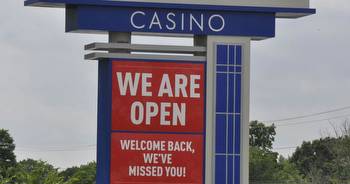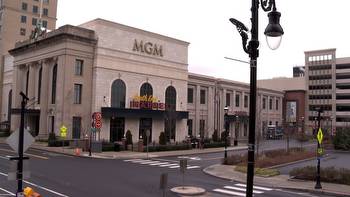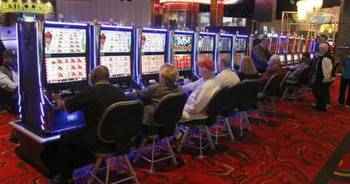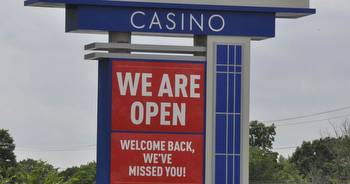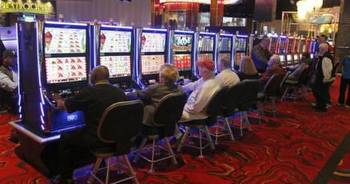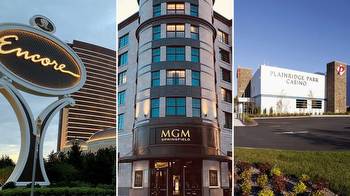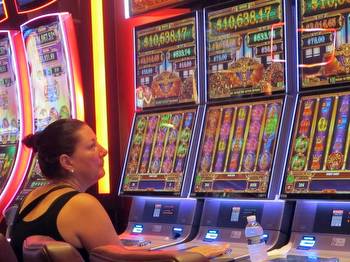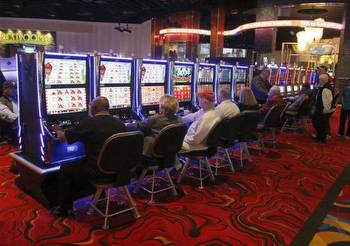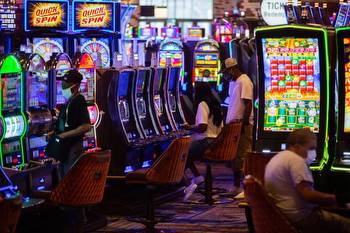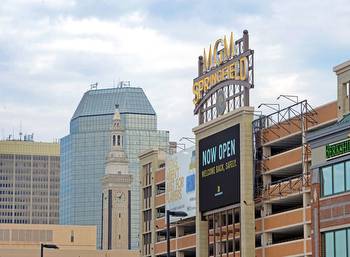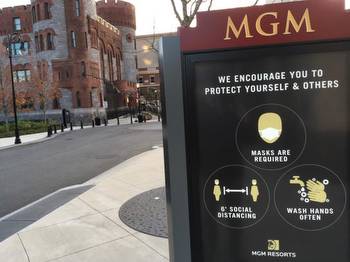Casino layoffs more pronounced among nonwhite workers, women

BOSTON — Casinos were among the hardest-hit businesses when the pandemic took hold more than two years ago, but the impacts of their shutdown here were not spread evenly throughout the workforce and the industry has not yet fully recovered, researchers told the Mass. Gaming Commission on Thursday.
The Gaming Commission last year made a study of the economic impacts of COVID-19 a top research priority and officials from the UMass Donahue Institute’s Economic & Public Policy Research Group presented their findings to the commission Thursday. In short, workers of color and female casino employees were most affected by layoffs, the casinos struggled to live up to their commitments to women- and minority-owned vendors during the pandemic, and the volume of casino visitors had not returned to pre-pandemic levels as of last summer.
“Bad news first: It was devastating from the onset when the casinos shut down in March of 2020 and it was felt throughout the casino industry, certainly throughout the industry in Massachusetts, and the ripple effect was quite large,” Mark Vander Linden, the commission’s director of research and responsible gaming, said. “The good news is that the recovery since that time and once the casinos reopened has been probably better than what could have been anticipated.”
In January 2020, there were 6,520 people employed at Plainridge Park Casino, MGM Springfield and Encore Boston Harbor earning a cumulative $36 million in monthly wages while the casinos raked in $80.25 million in gross gaming revenue for the month. In mid-March, all three gambling centers were closed and they did not return to full-capacity operations for more than a year.
Employment fell quickly as the casinos and slots parlor laid off workers. Encore went from 4,206 employees to a low of 1,854 workers, MGM Springfield plunged from 1,909 employees to just 149 and Plainridge Park’s employee headcount fell from 416 to just 18 workers, the report said. The workforce that stayed in place through the shutdown, the commission said in a summary of the report’s findings, “was more white and more male than the pre-pandemic workforce.”
“The layoffs fell most heavily on people of color, which reflected a broader trend across the commonwealth that when there’s a crisis like this, it often falls most heavily on folks who are, for various socioeconomic reasons, a bit more vulnerable,” Thomas Peake, a senior research analyst at the UMass Donahue Institute, told commissioners Thursday.
He added, “Young people, low-wage workers, women, [and] people of color bore the brunt of the job losses and reductions in hours. A lot of that was because of the sectors that those people are heavily represented in — food and beverage, gaming and recreation, hotel departments — these are areas with high concentrations of workers of color. They were also some of the areas that were most affected by the layoffs.”
But since the low points of employment, which did not align on the calendar because of differences in how each of the licensees handled its workforce, many of the laid-off workers have been hired back, Peake said. As of June 2021, which was the endpoint for the report, Encore had rebounded to 2,648 employees (63 percent of January 2020 levels), MGM was back up to 921 workers (48 percent of January 2020 levels) and Plainridge Park had bounced back to 252 employees (61 percent of January 2020 levels).
During the three-month closure of the casinos and the following period of reduced-capacity operations, the three licensees “struggled to achieve their spending goals on minority- and women-owned businesses,” Peake said, largely because there were far fewer business needs while closed.
“We were actually, I think, a little bit positively surprised by the fact that ... over that first period of reopening, there was actually an increase on average for this kind of spending,” he said. “But it’s certainly been erratic and that’s sort of understandable given the nature of what’s going on there.”
Casino visitation had not rebounded to pre-pandemic levels as of June 2021, Peake said, but the research team found that gross gaming revenue generated by the facilities had recovered to pre-pandemic levels by last summer. The three gambling centers generated $84.1 million in gross gaming revenue for June 2021 compared to $80.25 million in January 2020.
And gross gaming revenue was increasing faster than the number of people visiting any of the licensees, which Peake said suggested that there were some shifts in gambler behavior after the casinos reopened.
On average, post-reopening casino patrons were spending as much as two times the amount of money at the casino than they were prior to the pandemic, according to the report.
The report concluded that the casino industry and gaming regulators are “grappling with questions of whether and how COVID-19 has changed the business environment, with knock-on effects on profitability, viability of new investments, employment, and tax revenues.”
The report highlighted the potential legalization of sports betting as “a new channel for revenues for both sports book operators and states and a chance to attract consumers who are otherwise disinclined to visit a casino.” But it also issued a word of caution that a shift from traditional casino gambling to sports betting could mean less gambling revenue for the state.
“With margins on sports betting being considerably smaller than for traditional casino games, a reallocation of wagers to sports betting will result in less profits to casinos and fewer tax revenues to the state,” the report said.









